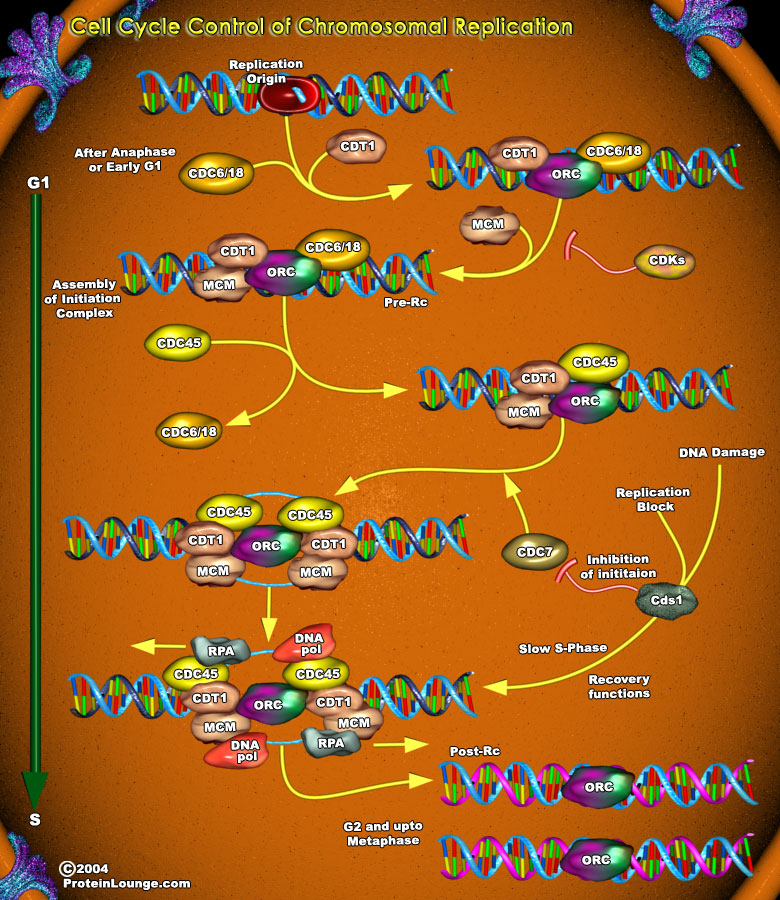
The stable propagation of genetic information requires that the entire genome of an organism be faithfully replicated only once in each cell cycle. In eukaryotes, this replication is initiated at hundreds to thousands of replication origins distributed over the genome, each of which must be prohibited from re-initiating DNA replication within every cell cycle (Ref.1). Initiation of DNA replication occurs by a two-step process. In the first step initiation proteins are assembled onto the replication origin in a step-wise fashion to yield an initiation complex. In the second step the initiation complex is activated by protein kinases, resulting in the establishment of replication forks. This process is tightly regulated such that initiation at a given replication origin[..]
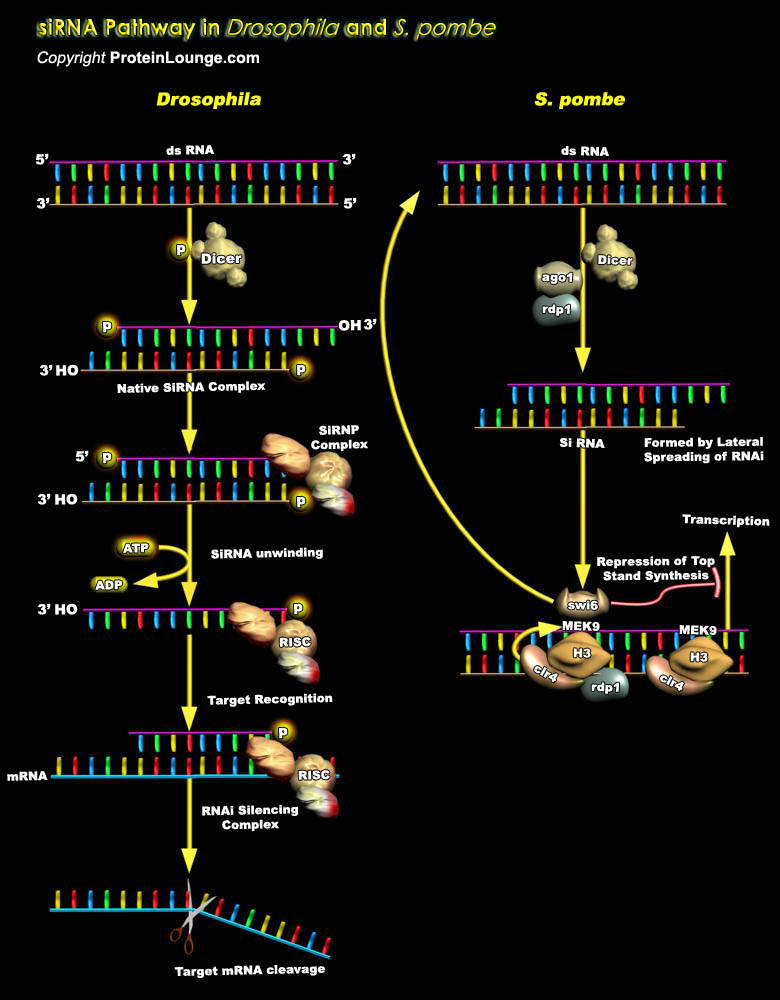
siRNAs (Small interfering RNAs) have gained much attention for their powerful ability to suppress gene expression. Introduction of dsRNA (double-stranded RNA), that are homologous in sequence to a gene, has proven to suppress that gene’s expression through a process known as RNAi (RNA interference). The basic mechanism behind RNAi is the breaking of a dsRNA matching a specific gene sequence into siRNA. These siRNAs are 21–23nt dsRNA duplexes with symmetric 2–3nt 3' overhangs and 5'-phosphate and 3'-hydroxyl groups, which trigger the degradation of mRNA that match its sequence (Ref.1). Interference of gene expression by siRNA is now recognized as a naturally occurring biological strategy for silencing alleles during development in plants,[..]
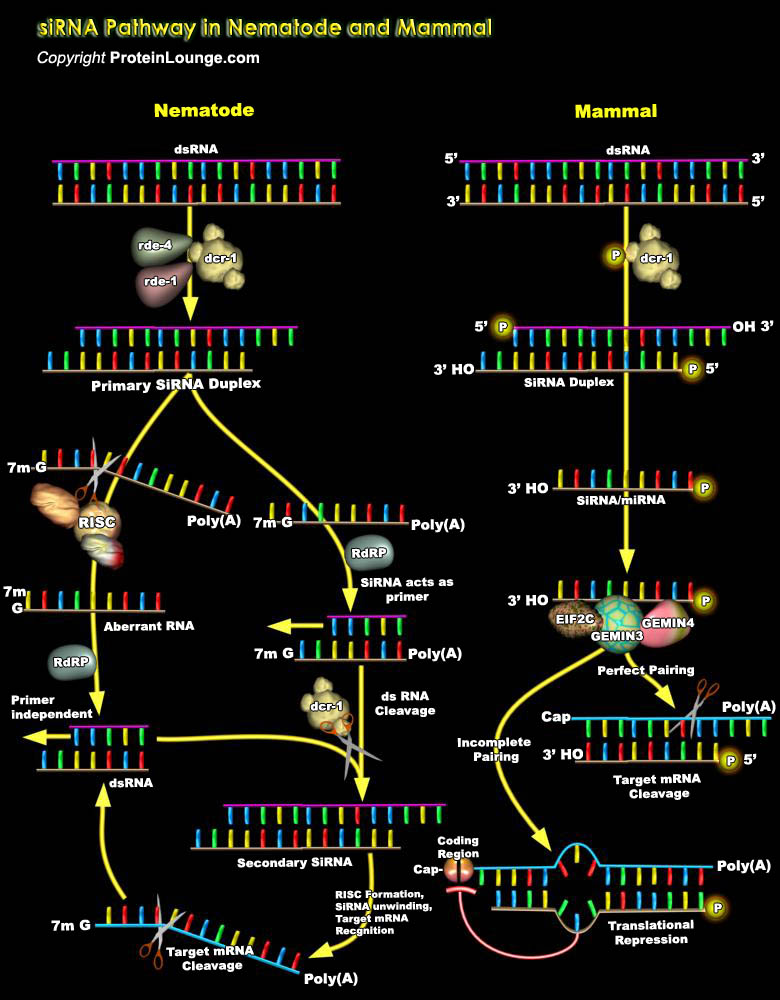
Introduction of dsRNA (double-stranded RNA), that are homologous in sequence to a gene, has proven to suppress that gene’s expression through a process known as RNAi (RNA interference). The mechanism of RNAi involves the breaking of a dsRNA matching a specific gene sequence into siRNA (Small interfering RNAs). These siRNAs are 21–23nt dsRNA duplexes with symmetric 2–3nt 3' overhangs and 5'-phosphate and 3'-hydroxyl groups trigger the degradation of mRNA that match its sequence (Ref.1). Interference of gene expression by siRNA is now recognized as a naturally occurring biological strategy for silencing alleles during development in plants, invertebrates, and vertebrates. siRNAs appears to suppress gene expression without producing a[..]

One of the ultimate frontiers for mankind is the elucidation of the function of the mind. Dopaminergic and Glutamergic are two primary neurotransmitter systems in the brain, which are crucially important for the control of the body musculature and the Dopamine-induced signaling pathways. Dopamine, a derivative of the amino acid Tyrosine, is a monoamine neurotransmitter that serves as a chemical messenger in the nervous system. It is the predominant Catecholamine neurotransmitter in the mammalian brain, where it controls functions such as locomotor activity, cognition, emotion, positive reinforcement, food intake, and endocrine regulation. Neurons in the midbrain release Dopamine, which modulates cAMP (Cyclic Adenosine 3',5'-Monophosphate) production by[..]
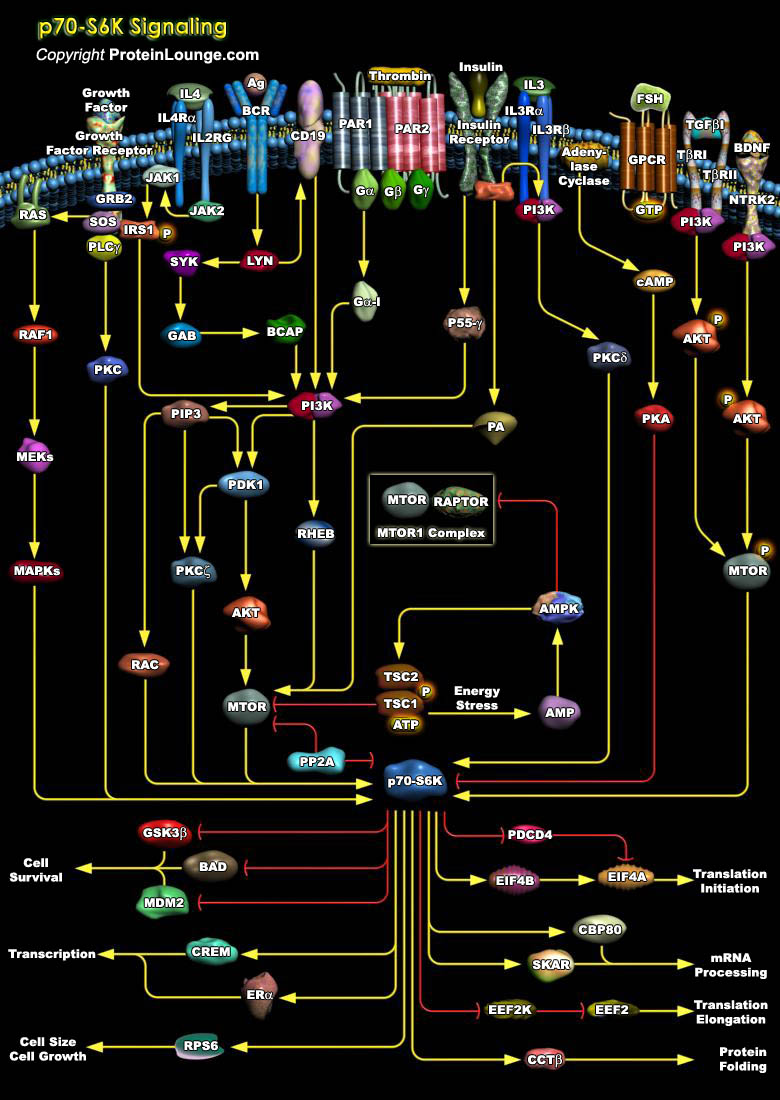
p70S6K is a protein Ser-Thr kinase that phosphorylates the ribosomal S6 subunit, a component of the 40S subunit of eukaryotic ribosomes. It plays a role in protein synthesis and in cell growth control during G1 phase in vivo to enhance translation of certain mRNA species (Ref.1). In the living cell, ribosomal p70S6K is activated through a complex network of signaling molecules. Multiple phosphorylation events within the catalytic, auto inhibitory and hydrophobic motif domains contribute to the regulation of p70S6K (Ref.2). The mTOR (Mammalian Target of Rapamycin) protein Ser-Thr kinase phosphorylates p70S6K at –Thr-412 in the hydrophobic motif. mTOR is one of the downstream targets of AKT and is a key factor in the AKT/mTOR pathway. AKT a serine/threonine kinase[..]
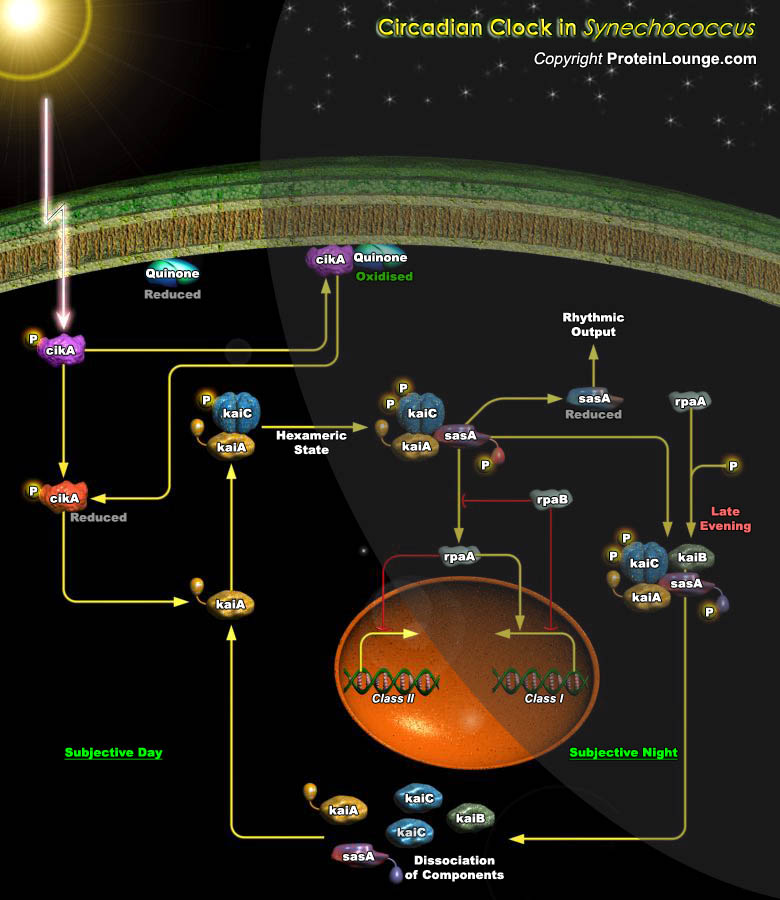
The unicellular cyanobacterium Synechococcus elongatus is an obligate photoautotroph and the simplest model organism in circadian biology. Circadian rhythms, regulated by a 24-h biological clock, enable the coordination of biological activity over the course of the day and facilitate adaptation to daily environmental changes in diverse organisms. Unlike the circadian oscillators found in eukaryotic systems, which employ a transcription–translation feedback loop(TTFL), the cyanobacterial core oscillator functions posttranslationally The S. elongatus core oscillator is a posttranslational oscillator (PTO), encoded by transcription factors kaiA, kaiB, and kaiC which regulate the global patterns of gene expression, the timing of cell division and compaction[..]
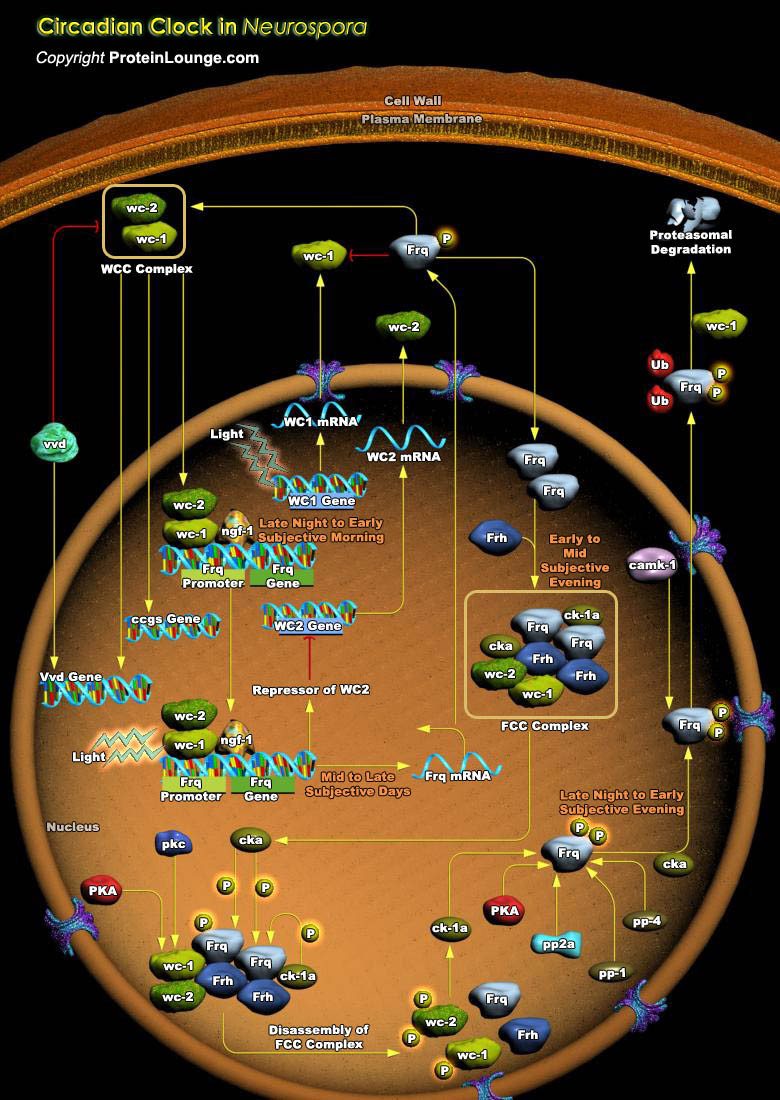
Circadian clocks are internal timekeepers that utilize environmental signals to induce cellular events to occur at the most favourable time of day. Circadian clocks in animals, plants, fungi and bacteria have similar characteristic properties and molecular architecture. They have a periodicity of approximately 24 hours, persist in constant conditions and can be reset by environmental time cues such as light and temperature. Although the length of the circadian period is temperature compensated, temperature shifts reset the phase of the oscillator. (Ref.1). Neurospora crassa (N. crassa) a filamentous fungus classified under the Phylum Ascomycota is commonly found in its vegetative state growing as a mycelium of haploid hyphae. The tubular hyphae forms incomplete[..]
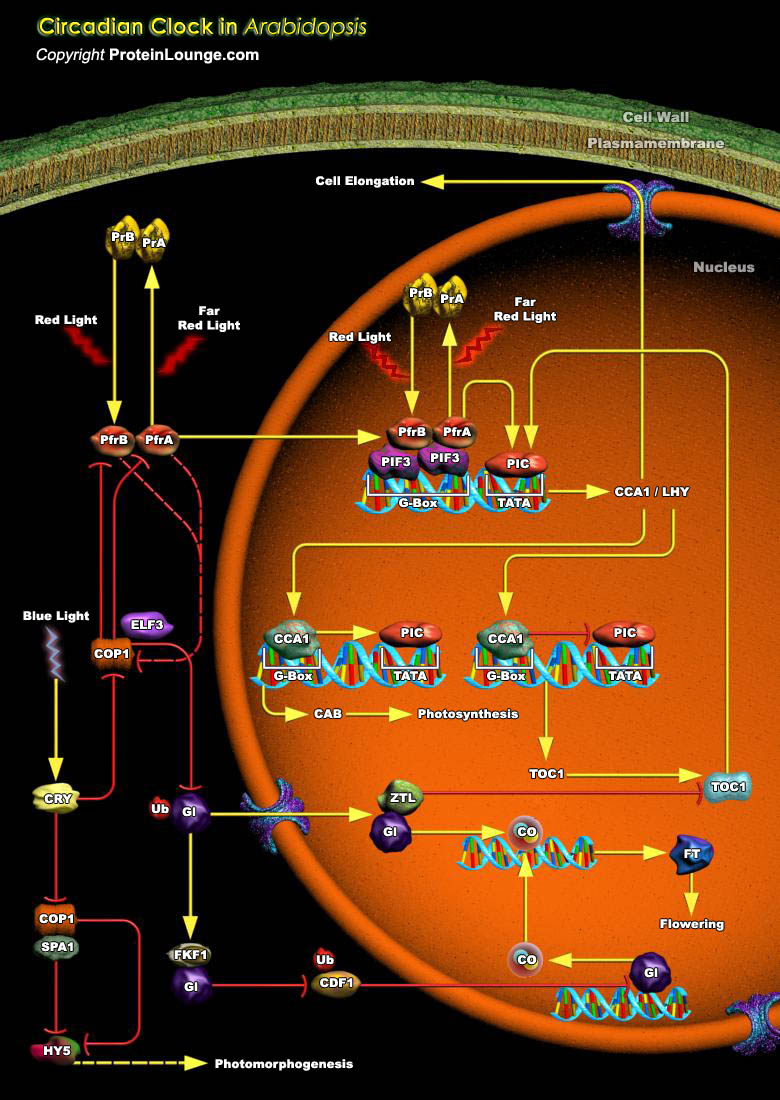
Photoreceptors and circadian clocks are univesal mechanisms for sensing and responding to the light environment. In addition to regulating daily activities, photoreceptors and circadian clocks are also involved in the seasonal regulation of processes such as flowering. Circadian rhythms govern many plant processes, including movements of organs such as leaves and petals, stomata opening, stem elongation, sensitivity to light of floral induction, metabolic processes such as respiration and photosynthesis and expression of a large number of different genes. In plants, phototransduction not only sets the phase, but also affects the amplitude and period of circadian rhythms. Members of the phytochrome family of plant photoreceptors, which can exist in two photochemically[..]
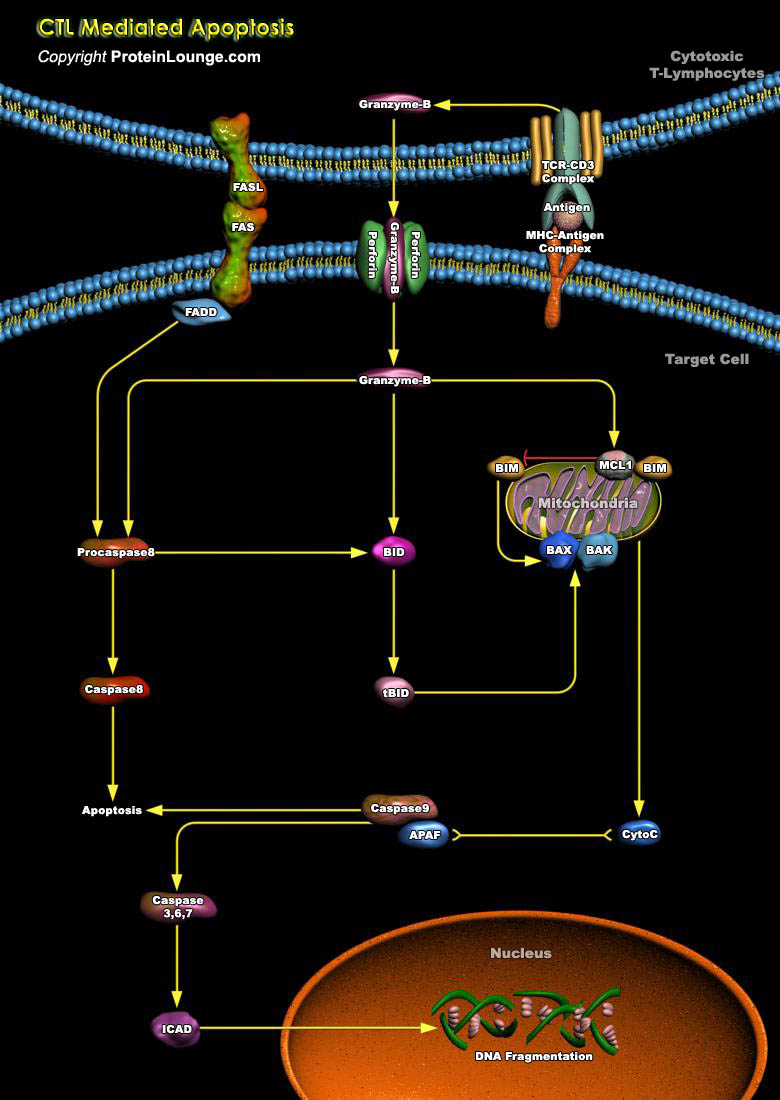
The CTLs (Cytotoxic T Lymphocytes), also known as killer T-Cells are produced during cell-mediated immunity designed to remove body cells displaying "foreign" epitope, such as virus-infected cells, cells containing intracellular bacteria, and cancer cells with mutant surface proteins. The CTLs are able to kill these cells by inducing a programmed cell death known as apoptosis (Ref.1).CTLs only respond to foreign antigen when it is presented bound to the MHC-I (Major Histocompatibility Complex Class-I) expressed on the surface of all cells. The CTLs contain granules composed of proteoglycans to which chemokines are complexed. These granules hold pore-forming proteins called perforins and proteolytic enzymes called granzymes in a protected state. When the TCR (T-Cell[..]
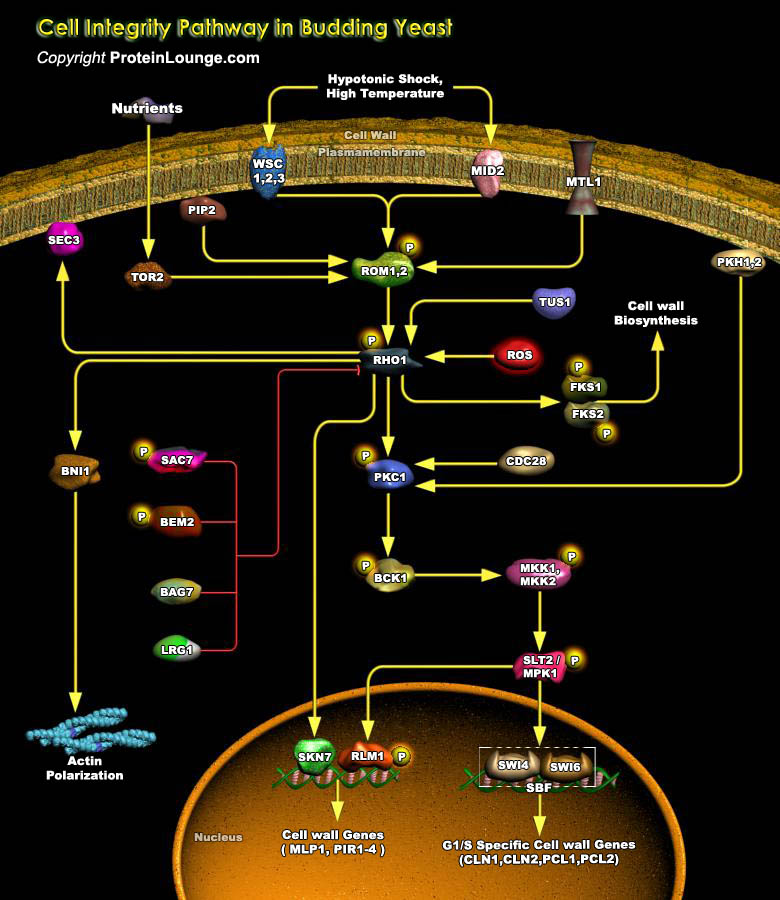
Extracellular environmental changes cause different types of stress in all the organisms and can seriously affect the viability of the cells. All cells have signaling pathways required to transmit the stress signals from outside and to develop the response and gene expression changes required to adapt and survive. Cell Integrity Pathway signaling is activated persistently in response to elevated temperatures, Hypo-osmotic shock, mating pheromone etc. The cell integrity pathway has sensors that detect changes in the cell wall or membrane caused by different stresses and transmit the stimulus to the MAPK (Mitogen-Activated Protein Kinases) cascade. MAPK cascades generally leads to a change of the cell's size or shape and is also important for processes[..]
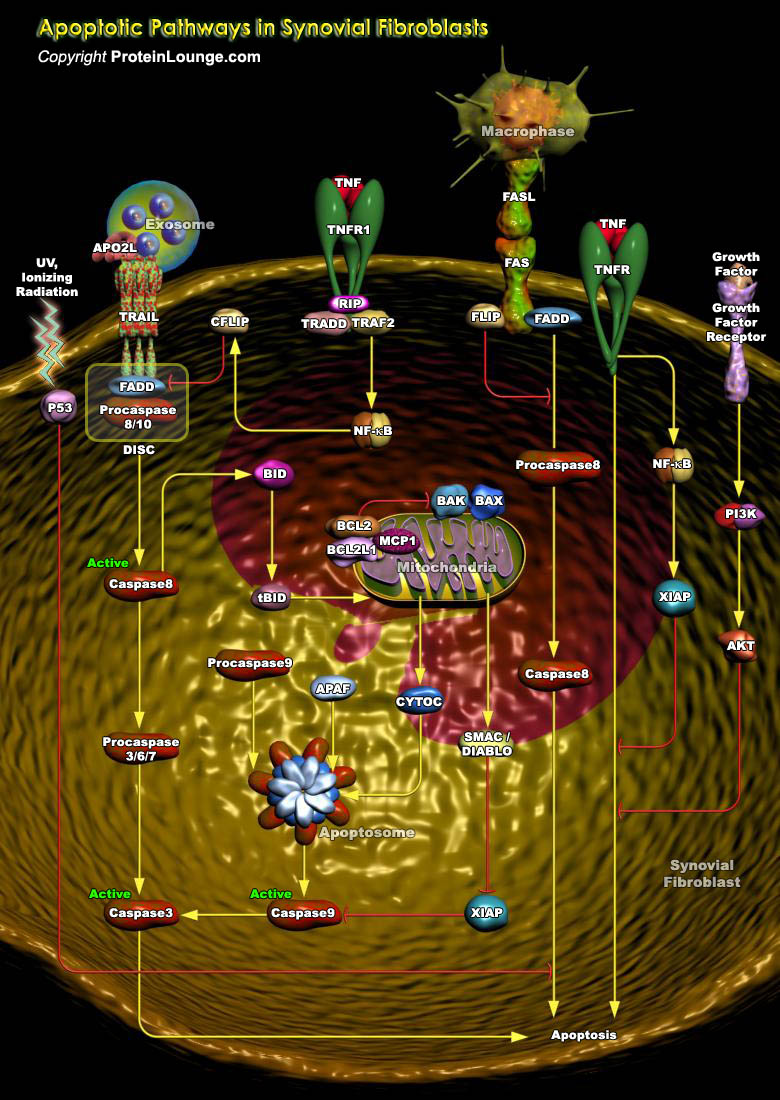
Rheumatoid arthritis (RA) is a chronic systemic autoimmune disease that primarily affects the lining of the synovial joints and is associated with progressive disability, premature death, and socioeconomic burdens.It is characterized by chronic inflammation and synovial hyperplasia that eventually lead to cartilage and bone destruction. Synovial fibroblasts are mesenchymal cells recognized as a key cell population in RA due to their hyperproliferative and hypersensitive properties in the inflammatory milieu and hyperproduction of both inflammatory cytokines and matrix-degrading enzymes.Macrophages are major components in the inflammatory cascade and are also important mediators of joint destruction in RA. Large numbers of macrophages are present in synovial tissue and[..]

Vegetative yeast cells respond to environmental cues by activating signal transduction pathways that enable them to mount the appropriate physiological response. Each of the cues is dealt with by distinct signaling mechanisms to cause the appropriate response to a given stimulus. In the budding yeast Saccharomyces cerevisae, there are at least five MAP kinase (Mitogen-Activated Protein Kinase) cascades. MAPK cascades are conserved signaling modules that regulate responses to diverse extracellular stimuli, developmental cues and environmental stresses. A MAPK is phosphorylated and activated by a MAPKK (MAPK Kinase), which is activated by an upstream protein kinase, MAPKK kinase. Each pathway is initiated by a distinct upstream regulator and individual MEKK-MEK-MAPK[..]

